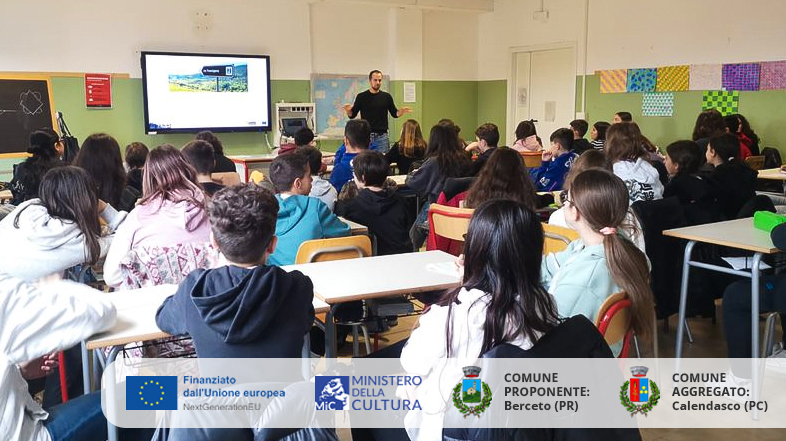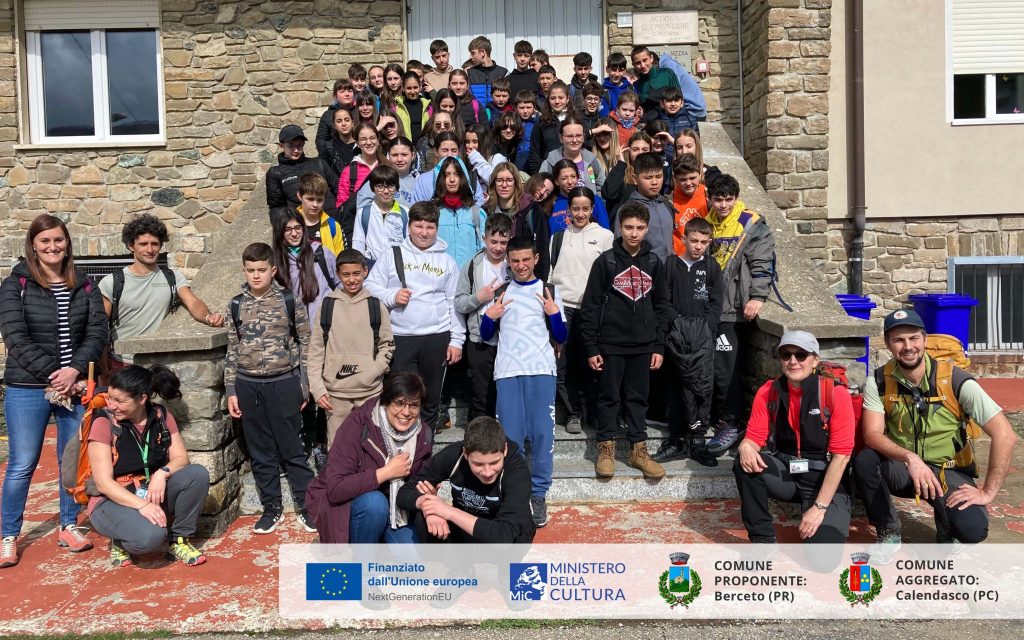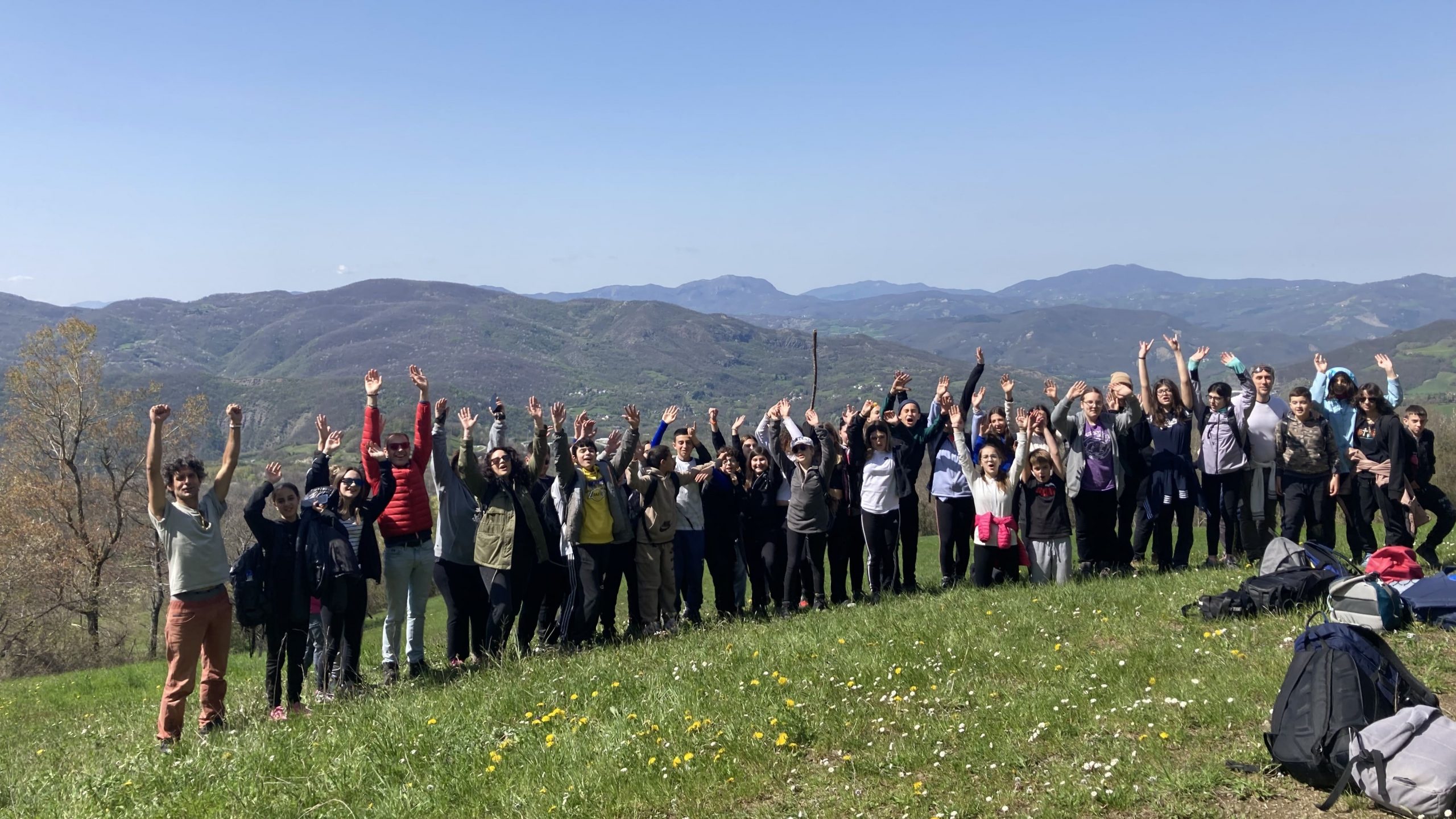The regeneration of historic villages (“borghi” in Italian) along the Via Francigena, particularly Calendasco (Piacenza) and Berceto (Parma) —the first and last municipalities in Emilia-Romagna region on the cultural route of the Francigena — is at the heart of the “Transitare Paesaggi Culturali” project (2022–2026). This programme, born from collaboration between the European Association of the Via Francigena ways (EAVF) and the italian Ministry of Culture, is a key initiative for the cultural and social revitalisation of Emilia-Romagna. It is funded by the European Union through the Next Generation EU funds under the PNRR Borghi tender.
The Historical Role of Calendasco and the Via Francigena
Calendasco is a village rich in history, located at a strategic point along the Via Francigena, one of Europe’s oldest and most significant pilgrimage routes. This small town is home to one of the trail’s key landmarks: the Guado di Sigerico, where pilgrims crossed the River Po using ferries—a passage that continues to attract attention for its historical and symbolic value. The Via Francigena, connecting Canterbury to Rome, played a crucial role in cultural exchange and the flow of ideas, goods, and people over the centuries. Today, it re-emerges as a symbol of European identity and intercultural dialogue.
The “Transitare Paesaggi Culturali” Project and the Restoration of the Village
The initial phase of the project has already seen significant interventions in Calendasco, including the restoration of the castle’s former stables. This historic structure is being transformed into a cultural hub—a lively centre for cultural events, meetings, and activities aimed at enhancing local heritage. This creates new opportunities for sustainable development for the community, involving local and provincial schools.
In parallel, Berceto is also undergoing restoration, with the redevelopment of a former residential public building and the activation of a public cultural space. Situated along the scenic Cisa Pass, Berceto is set to become a key hospitality point with the “Pilgrim’s House”, a facility dedicated to those walking the Francigena trail.
The Festival of Transitions: Cultures in Motion and Diversity
One of the project’s most noteworthy initiatives is the “Transitions Festival” (2023–2024), which explores European cultural diversity and the “cultures of transit” along the Via Francigena. The festival provides a platform to reflect on the social and cultural transformations this historic route has fostered over time, focusing on themes such as integration, dialogue, and respect for diversity.
Education and School Engagement
The educational aspect of the “Transitare” project, led by AEVF, has been particularly impactful. Among the initiatives were educational walks for students as part of the ERASMUS Youth Pilgrims project. Many young people had the chance to discover Calendasco, reliving the experience of the Guado di Sigerico by crossing the River Po by ferry and visiting the castle and former stables—living examples of how cultural heritage can be enriched through education and responsible tourism.
Local schools, particularly Calendasco’s lower secondary school, played an active role in the project. Hosting a group of French students on an Erasmus exchange, they engaged participants in field and classroom activities, such as a workshop at the Piacenza campus of the Polytechnic University of Milan. These intercultural, barrier-free exchanges promoted the values of the Via Francigena among new generations, fostering a deeper connection with the territory.



A New Vision for the Future
The “Transitare Paesaggi Culturali” project is a model of how urban and cultural regeneration can revitalise historic villages, bringing ancient traditions back to life and creating new opportunities for the future. The Via Francigena is not only a historic route but also a contemporary laboratory for ideas and initiatives that strengthen European identity, intercultural dialogue, and sustainability.
The restoration of places like Calendasco and Berceto, supported by European funds and collaboration among institutions, local communities, and schools, exemplifies how the past can fuel an inclusive and innovative future. This is just the beginning of a journey to rejuvenate villages along the Via Francigena, offering them not only to pilgrims but to everyone seeking a meaningful connection with history and culture.
For further information, visit:









